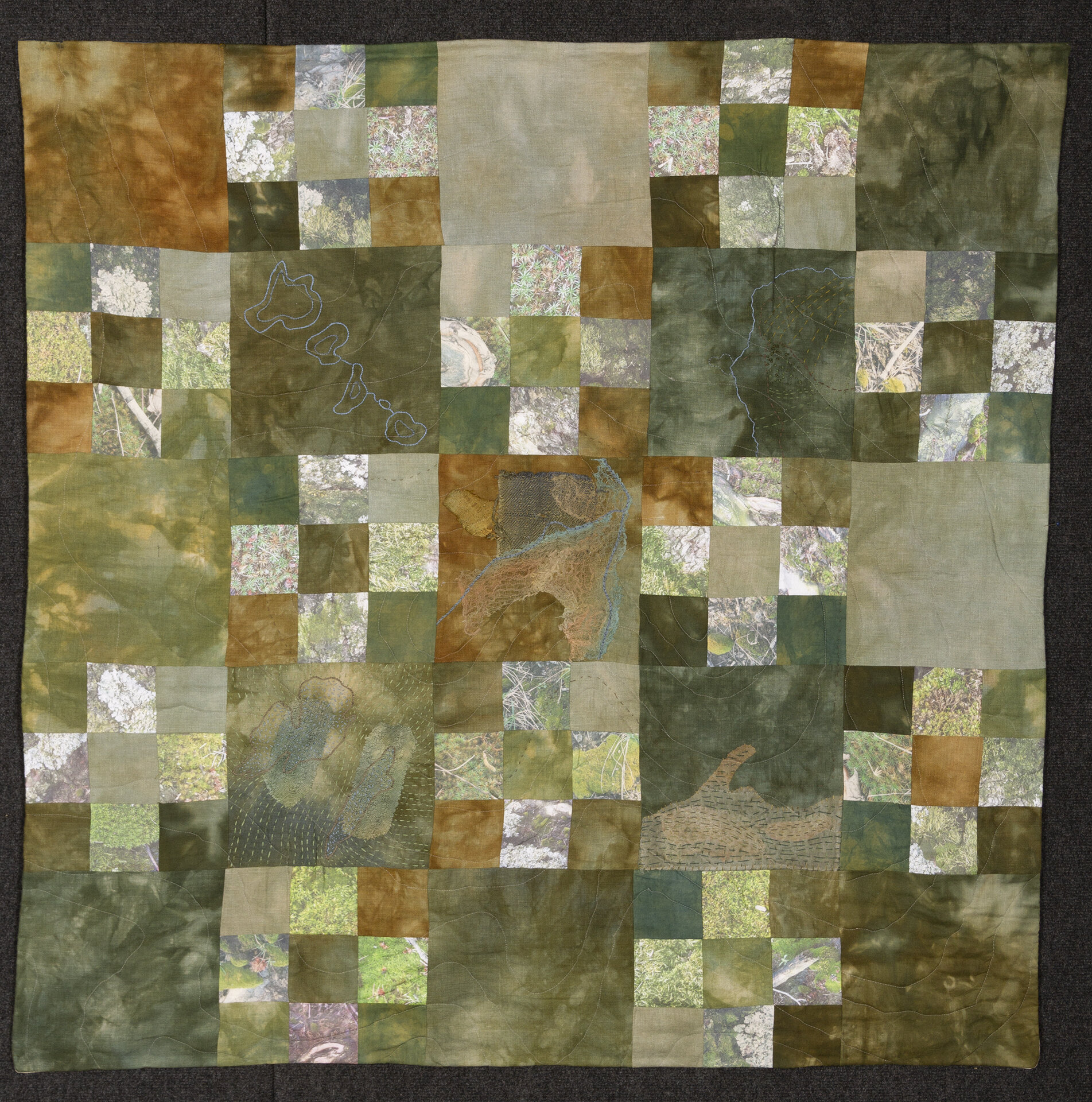I packed up my work this week to drop off at the Foundry Art Centre for my solo show that opens on September 3rd. The show opening marks the first time that most of this work will be seen in person. I’m very curious to get feedback and experience it in a space all together. The pandemic has taught me how much exhibiting is a major part of the process of working as an artist. Working on these pieces has taken a lot of time and it is easy to get lost in the forest with all the trees. Seeing work hung and watching people experience it is very educational. It can teach me new aspects to the work that I hadn’t considered before and lead to future pieces.
Mapping Memory III. Hand dyed and woven fabric, hand embroidery, and machine quilted.
Cotton and linen. 10" h x 10" w x 1" d 2019
The last time I exhibited a body of work was for my MFA thesis show in graduate school. Very often in shows one or two works are exhibited amongst others by other artists. Seeing a cohesive group of my work together provided a new understanding of how my ideas work across multiple pieces and the unexpected conversations that emerged between the pieces. One of the works in the Foundry show is a quilt, Homelands from my MFA thesis work. I found when thinking about what work to select that the ideas in that piece are just as present in my work today. The show is made up of several larger quilt forms as well as two series of smaller works.
Homelands
Hand dyed cloth, handwoven fabric, digital print on fabric, hand embroidery, machine pieced and quilted.
Linen, cotton and silk. 45" x 45"
2018
It has been very hot and humid in Missouri. We’ve had several days in a row of heat indexes and as a result I feel like I’ve been moving in slow motion. In contrast, my current audiobook is Arctic Dream by Barry Lopez. I first experienced Lopez’s work in my undergraduate nature writing literature class. I selected the class on a whim, and I think it is interesting that the themes and writers have become so centered in my mind with the work I’ve been doing. While researching and thinking about my artist statement for the show, I read an article by Barry Lopez and was struck several times by his words. The following quote made it into my show statement as it speaks to my ideas and work on so many levels.
“If you're intimate with a place, a place with whose history you're familiar, and you establish an ethical conversation with it, the implication that follows is this: The place knows you're there. It feels you. You will not be forgotten, cut off; abandoned.”
Barry Lopez
Discarded Intimacy. Vintage handkerchief with embroidery, altered with dye and hand embroidered. Mounted on stretched linen. Cotton, silk, rayon, and linen. 12" h x 12" w x 1" d
Barry Lopez passed away in December 2020, I did not hear of this until my recent research. It seems a fitting tribute that I’ve circled back to his words.
The show is titled Inheritance: The Endurance of Land. Titles do a lot of heavy lifting for me. For this show I was thinking about my own connection to the place that I live as well as the places my ancestors have loved. In traveling, I have found they are imprinted inside of me. The title also echoes, the translation for my family’s Finnish last name – the land endures. I love this encoded link to land found directly in our name.
If you are in the St. Louis area, the show opens at the Foundry Art Centre on September 3 and runs through November 19, 2021. There is an opening reception on September 3, from 5 pm – 8 pm.






